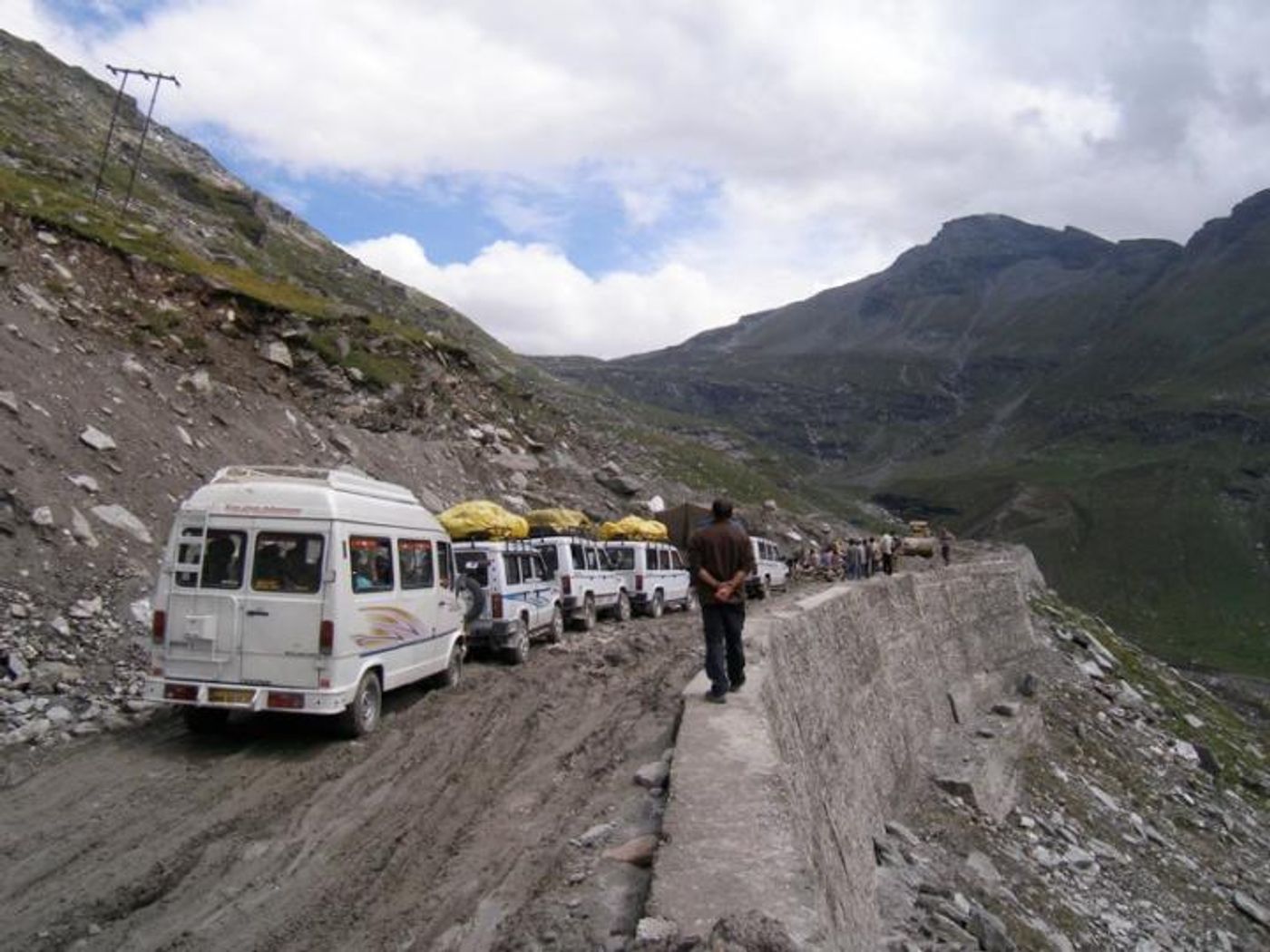Diesel pollutants found in Himalayan soil
In order to determine pollution levels in roadside soils where mostly diesel vehicles are driven, scientists from the University of Cincinnati embarked to the Manali-Leh Highway in northwestern Himalaya, India. The 300-mile highway is known for its winding, grinding terrain, passing mountains at 17,480 feet; because of its remoteness, the scientists were hoping to find little pollution. You can watch footage of the trecherous road below.
But unfortunately, the scientists found more than a little pollution. "We measured incredibly high amounts of sulfur close to the highway. Some of those values are the highest ever reported in the literature and were likely connected to truck traffic," said Brooke Crowley, an assistant professor of geology and anthropology.
The highway was built in the 1970s and every year approximately 50,000 vehicles pass by. "At first glance, it's easy to consider the region to be a pretty pristine place. But there are environmental impacts from humans," Crowley said. Most of the buses and heavy trucks that use the Manali-Leh Highway are diesel fueled because of the lower cost. But this has detriments on the environment, as India's diesel is known to have a high sulfur content, which produces to acid rain.
In order to determine just how much of an anthropogenic impact the vehicles were creating, Crowley and UC graduate student Rajarshi Dasgupta collected soil samples from four sites along the highway at increasing distances from the side of the highway (0, 2, 5, 10, 20, and 150 m). At each distance, they took samples from depths of 3, 9, and 15 cm.
For each distance and depth, the team analyzed the soils for 10 heavy metals (Al, Fe, Cr, Cu, Pb, Ni, Co, Zn, V, and Ba), total sulphur, total organic carbon (TOC). They also looked at the levels of 16 polycyclic aromatic hydrocarbons (PAHs) closer to the highway (2 meters away).
The results for the heavy metals turned out fine, with low concentrations and no relationship between concentrations and distance from the highway, or depth within the soil profile, reports the study. Yet sulphur concentrations (remember, sulphur can lead to acid rain) were found to be high in roadside soils and the researchers found a negative relationship between concentration and distance from the highway.
The study goes on to explain the rest of the results: “PAH concentrations are low, but the proportion of different ringed species suggests that their source is anthropogenic. Correlations between TOC and the various pollutants further suggest that diesel vehicles and potentially biomass combustion are starting to affect the roadside environment in remote northwestern India.”
Due to these results, as well as India’s commitment to the Paris Climate Change Agreement and the country’s goal of producing 40 percent of its electricity with renewable energy by 2030, the scientists are urging India’s government and scientific community to continue biomonitoring pollutants in soils.
Sources: Eureka Alert, Environmental Contamination and Toxicology









